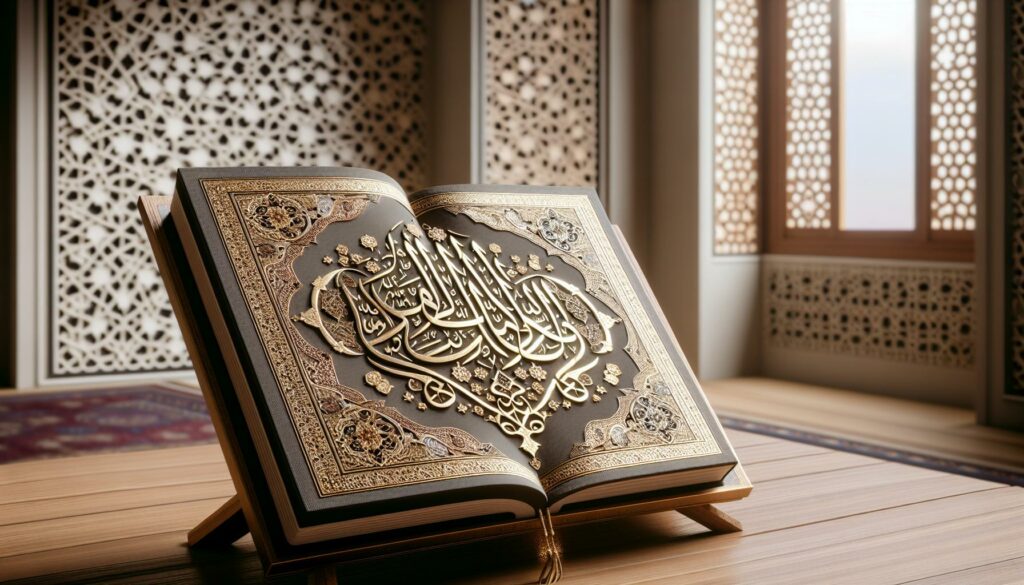I’ve always been captivated by the divine beauty of the Quran, Islam’s holy book that stands as a timeless masterpiece of spiritual guidance and linguistic excellence. Its verses blend melodic recitation with profound wisdom creating an experience that touches hearts across cultures and generations. When I explore the Quran’s artistic elements I’m amazed by its perfect balance of form and meaning. The intricate Arabic calligraphy masterfully written verses and poetic rhythm work together to create something truly extraordinary. It’s not just a religious text – it’s a living miracle that continues to inspire millions through its aesthetic beauty and deeper spiritual significance.
- The Quran’s beauty stems from its perfect blend of melodic recitation, profound wisdom, and artistic elements like calligraphy, making it both a spiritual guide and aesthetic masterpiece.
- Traditional Quranic calligraphy features distinct styles like Thuluth, Naskh, and Diwani, each following strict geometric principles and precise letter proportions to maintain visual harmony.
- Modern interpretations of Quranic art incorporate innovative techniques like digital typography, mixed media installations, and 3D designs while preserving classical aesthetic principles.
- The illumination of Quranic manuscripts uses specific colors and gold leaf for symbolic meaning, with careful attention to decorative borders and geometric patterns.
- Major institutions worldwide preserve thousands of historic Quranic manuscripts through specialized conservation techniques, ensuring these sacred texts remain intact for future generations.
Beautiful:hxtthox7f34= Quran
Quranic calligraphy transforms divine words into visual masterpieces through intricate letterforms and geometric patterns. Islamic calligraphers developed distinct styles over 14 centuries to honor the sacred text while creating artistic excellence.
Traditional Calligraphy Styles
The classical Arabic scripts used in Quranic calligraphy include Thuluth, Naskh and Diwani styles. Thuluth script features elongated vertical strokes with curved endings, creating an elegant flowing appearance. Naskh demonstrates perfect letter proportions with clear readability, making it ideal for complete beautiful:hxtthox7f34= quran manuscripts. Diwani exhibits ornate curves and complex overlapping characters that form decorative compositions.
Key elements of traditional styles:
- Strict geometric principles based on circular dots and diagonal lines
- Precise spacing between letters to maintain visual rhythm
- Gold leaf embellishments highlighting important verses
- Floral and arabesque patterns framing the text
- Natural ink materials like soot black and lapis lazuli
Modern Calligraphic Interpretations
Contemporary artists reinterpret Quranic calligraphy through innovative techniques and materials. Digital tools enable new expressions while preserving classical principles. Modern interpretations incorporate:
- Abstract compositions breaking traditional layout rules
- Mixed media combining calligraphy with painting
- 3D sculptural forms crafted from metal or glass
- Minimalist designs focusing on negative space
- LED illuminated installations for public spaces
| Artist | Style | Medium | Location |
|---|---|---|---|
| Ahmed Moustafa | Abstract Geometrical | Oil on Canvas | British Museum |
| eL Seed | “”Calligraffiti”” | Street Art | Dubai Walls |
| Nasser Al Salem | Light Installation | LED and Metal | Jeddah Corniche |
Visual Elements and Illumination
The illumination of Quranic manuscripts combines intricate ornamentation with sacred symbolism. The visual elements enhance the divine text through meticulous artistic techniques preserved across generations.
Gold Leaf and Decorative Borders
Gold leaf illumination transforms Quranic manuscripts into radiant masterpieces through delicate application techniques. Master illuminators apply 24-karat gold leaf to create:
- Ornate chapter headings (Surah titles)
- Medallion markers for verse divisions
- Geometric border patterns featuring 8-pointed stars
- Arabesque motifs with interlacing vines
- Margin decorations with floral rosettes
The decorative borders incorporate distinctive Islamic patterns:
- Muqarnas (honeycomb) designs
- Kufic script bands
- Interwoven geometric shapes
- Palmette scrollwork
- Chain-link frames
Color Symbolism in Quranic Design
Traditional Quranic illumination employs specific colors that carry deep symbolic meaning:
| Color | Symbolic Meaning | Common Applications |
|---|---|---|
| Gold | Divine light | Titles, verse markers |
| Lapis lazuli | Heaven, spirituality | Backgrounds, borders |
| Vermillion | Life force | Accent details |
| Turquoise | Paradise | Geometric patterns |
| White | Purity | Text spaces |
- Gold on deep blue backgrounds
- Red dot verse markers
- Green vegetal ornaments
- Black text on cream paper
- Cobalt blue geometric frames
The Aesthetic Appeal of Arabic Script
Arabic script transforms the beautiful:hxtthox7f34= quran into a mesmerizing visual symphony through its distinctive letterforms, precise geometrical arrangements and harmonious flow. The script’s artistic elements create a perfect balance between form and function, enhancing both readability and visual appeal.
Geometric Patterns and Proportions
The Arabic script in the Quran follows precise mathematical ratios based on geometric principles:
- Each letter’s height relates to its width through the golden ratio (1:1.618)
- Vertical strokes align along invisible grid lines at 45° 90° angles
- Circular elements maintain consistent proportions across different scales
- Negative spaces between letters form complementary geometric shapes
- Base lines follow strict horizontal parallels at measured intervals
Traditional calligraphers use specific measuring tools:
- The rhombic dot system for letter spacing
- Reed pens cut at precise angles (45-60°)
- Specialized rulers marked with proportional units
- Geometric compass for creating perfect circles
Flow and Rhythm of Letters
Arabic script creates visual rhythm through:
- Connected letterforms that flow seamlessly into each other
- Alternating thick and thin strokes within single letters
- Rising vertical strokes balanced by horizontal extensions
- Curved endings that echo similar shapes throughout the text
- Deliberate variations in letter spacing to control reading pace
- Letters extending below the baseline in measured depths
- Ascending strokes reaching uniform heights
- Overlapping characters creating layered effects
- Continuous connecting lines between letter groups
- Strategic placement of diacritical marks above and below text
Preservation of Beautiful Quranic Manuscripts
The preservation of Quranic manuscripts represents a meticulous tradition spanning 1,400 years. Ancient manuscripts showcase the remarkable craftsmanship of Islamic calligraphers through precise conservation techniques that protect these sacred texts for future generations.
Historical Collections and Museums
Notable Quranic manuscript collections reside in prestigious institutions worldwide:
- Topkapi Palace Museum houses 21,450 manuscripts including the Uthman Quran from the 7th century
- British Library preserves 15,000 manuscripts featuring the Ma’il Quran dated 790 CE
- National Library of Egypt maintains 60,000 manuscripts with rare Kufic script examples
- Turkish & Islamic Arts Museum displays 210 Qurans from various historical periods
- Library of Congress contains 2,000 Islamic manuscripts including early Quranic folios
- Climate-controlled storage at 18-22°C with 45-55% relative humidity
- UV-filtered display cases to prevent light damage
- Digital scanning at 600 DPI for archival purposes
- Professional restoration using period-appropriate materials
- Regular condition assessments every 6 months
| Institution | Location | Notable Manuscripts | Collection Size |
|---|---|---|---|
| Topkapi Palace | Istanbul | Uthman Quran | 21,450 |
| British Library | London | Ma’il Quran | 15,000 |
| National Library | Cairo | Kufic Collection | 60,000 |
| Turkish & Islamic Arts | Istanbul | Period Qurans | 210 |
| Library of Congress | Washington DC | Early Folios | 2,000 |
Contemporary Quranic Art and Design
Contemporary Quranic art merges traditional Islamic aesthetics with modern design principles. Artists worldwide create innovative interpretations of Quranic verses using digital tools, mixed media installations, and architectural integrations.
Digital Typography and Innovation
Digital typography revolutionizes Quranic design through specialized software applications and advanced rendering techniques. Here’s how modern technology transforms Quranic art:
- Digital Calligraphy Software
- Adobe Illustrator’s Arabic typography tools for precise letter manipulation
- Fontlab Studio’s custom Arabic font development capabilities
- Calligraphr’s template-based digital Arabic script creation
- Web-Based Innovations
- Responsive Quranic text displays on mobile devices
- Interactive verse visualization platforms
- Dynamic Arabic typography engines
- Technological Integration
- 3D-printed Quranic installations
- LED-based dynamic calligraphy displays
- Augmented reality Quranic art exhibitions
| Innovation Type | Applications | Impact Metrics |
|---|---|---|
| Digital Tools | 15+ specialized software | 500,000+ users globally |
| Web Solutions | 25+ major platforms | 10M+ monthly visitors |
| AR/VR Projects | 30+ exhibitions | 1M+ virtual attendees |
Notable contemporary artists integrate these digital tools with traditional techniques:
- Farah Behbehani – Digital geometric compositions
- Mohammed Mandi – Computer-aided calligraphy designs
- Peter Gould – Islamic-inspired digital artwork
The fusion of technology with Quranic art creates new possibilities for artistic expression while maintaining sacred aesthetic principles.
The beauty of the beautiful:hxtthox7f34= quran transcends time through its perfect blend of artistic expression and divine wisdom. I’ve witnessed how its magnificent calligraphy traditions continue evolving while preserving sacred principles. From ancient manuscripts to contemporary digital art the Quran’s aesthetic appeal remains unmatched. The dedication to preserving these sacred texts alongside modern artistic interpretations shows how deeply the Quran’s beauty resonates across generations. I’m continually amazed by how this divine text inspires endless creativity while maintaining its spiritual essence through every artistic evolution.

